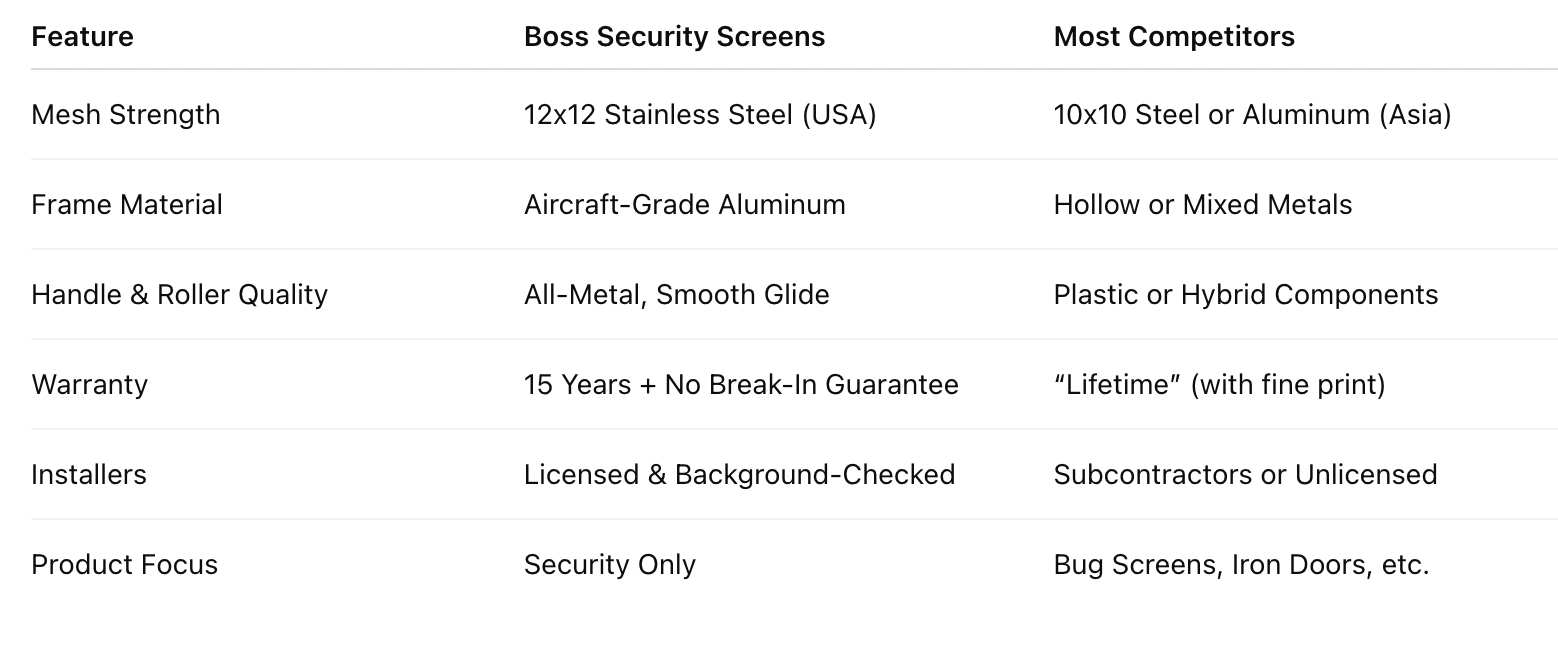High-Security Sliding Door Screens That Stop Intruders
Why You Need a Security Screen for Your Sliding Door
Sliding doors are beautiful—but they’re also one of the weakest points in your home’s defense. They're often made of large, unreinforced glass and are easy targets for burglars who know how to quietly lift them off the track or smash their way in. (Interestingly, sliding doors are so prevalent in our areas of service: Las Vegas, Phoenix, Los Angeles. We like those views and that sunshine.). According to the FBI, a burglary occurs every 15.4 seconds in the U.S., with 22% of burglars entering through the back door—often a sliding glass door.
Most break-ins happen in seconds. But when you install a high-security screen over your sliding door, you give your family something precious: time. Time for your dog to bark. Time for you to call 911. Time for the intruder to give up and move on.
What Makes Boss Sliding Door Screens Different
We engineered our screens with one goal: to stop break-ins without making your home look like a prison. Here’s what sets us apart:
12x12 stainless steel mesh made in the USA—tough enough to stop a knife or crowbar
Aircraft-grade aluminum frame—rigid, rustproof, and built to last decades
Smooth-glide metal rollers—easy to open and close, even for kids and seniors
Flush-mount or face-mount options for a clean, modern look
Licensed, background-checked installers who treat your home like it’s their own
15-year warranty + our industry-exclusive No Break-In Guarantee
We don’t cut corners. We stop criminals.
Real Customer Stories: Sliding Doors That Stopped Break-Ins
"I woke up to the sound of someone trying to open our sliding door. They tried hard—but couldn’t get through. The screen held. My family was safe. I can't thank you enough."
— Sarah T., Las Vegas
"Our neighbors were broken into. We weren't—because of your screen. Worth every penny."
— Marcus D., Phoenix
More than 16,000 installs. Zero break-ins.
SEE HOW IT WORKS - INSTALLATION AND OPERATION
Frequently Asked Questions
Will my sliding door still open easily?
Yes! Our security screens are designed to glide smoothly, even with one hand.
Can it be locked from both sides?
Absolutely. You’ll have secure access inside and out.
What if I have pets or kids?
Our mesh is strong enough to handle scratches, pushes, and everything in between.
Does it change how my home looks?
Not at all. The design is modern, discreet, and beautiful
Get a Free Local Estimate FOR backyard screen enclosures
We make it simple. No pressure. No hidden fees.
✅ A quick measurement
✅ A clear price
✅ A plan to protect your home—on your schedule
📞 Call us or click below to schedule your free quote today.




